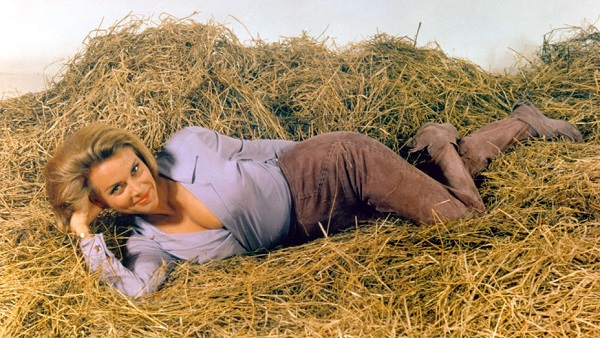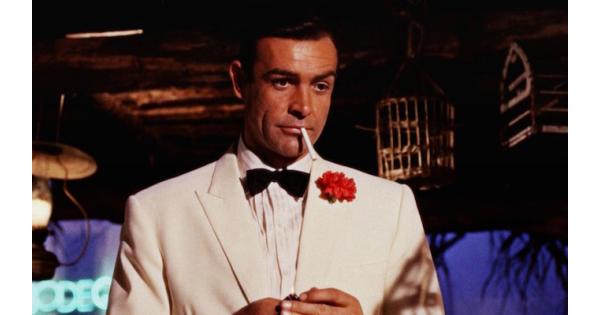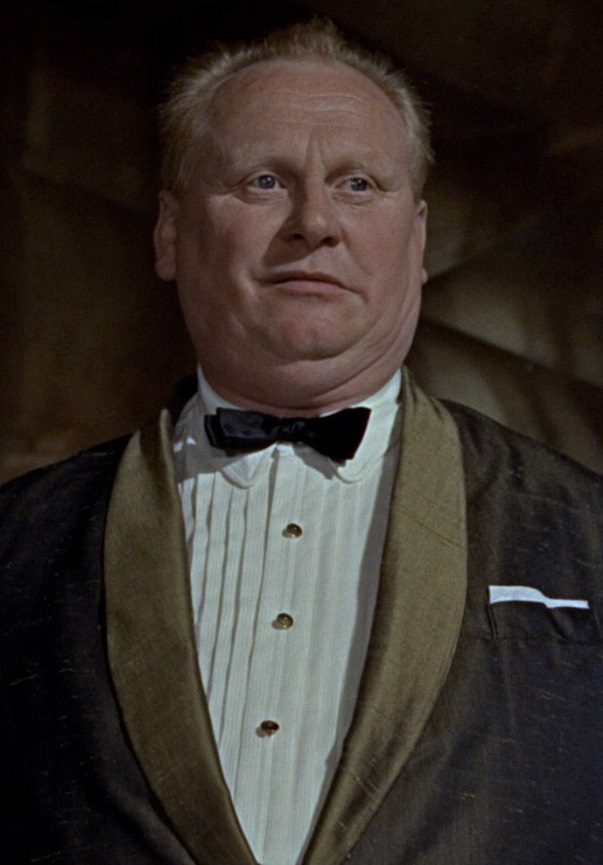
“I must be dreaming.”
This was it. This was the moment that James Bond, as a cinematic franchise, was realised as the total escapist fare it could be. Albert ‘Cubby’ Broccoli and Harry Saltzman knew they were on the cusp of the biggest Bond yet. All of the things that made the early Bond films came to a perfect brew in this film.
Based on Ian Fleming’s seventh 007 novel, though he passed before he could see how it was translated to the screen, (he did get to visit the set though), Goldfinger was the combination of suave super-spy, beautiful woman, exotic locations, gadgets, a fantastic pre-mission pre-title sequence, a brilliant theme song belted out by Shirley Bassey, an on-point score by John Barry, a larger than life villain in Auric Goldfinger (Gert Frobe), a dangerous henchman with Oddjob (Harold Sakata). And at the centre of it all, exuding a cool that he could have trademarked, Sean Connery as James Bond, 007, licence to kill.
There are also some admittedly troubling moments in the film, all of them centred on Bond’s relationship with the iconic Pussy Galore (wonderfully played by Honor Blackman who left her role in the long running British series Avengers to star in this Bond film). In the novel, and in the film, she is hinted at as being a gay character. That doesn’t stop Bond however, forcing himself upon her after some quick falls in the hay (very uncomfortable). After sleeping with her, Pussy is now firmly on Bond’s side. And her glossed over tendencies are forgotten in his virile presence for the rest of the film.
That part of the film has not aged well at all.
But the rest of the film is simply iconic. Guy Hamilton slips into the director’s chair, taking over from Terence Young, who directed the previous films. And the change adds an extra punch of energy to the film. Richard Maibaum who had adapted Fleming’s novels for the previous films is joined by Paul Dehn, and the pair turn out a corker of a script that plunges Bond into an adventure from the get-go as we join him at the conclusion of his mission. And then while vacationing in Florida is contacted by Felix Leiter (Cec Linder) with a mission from home. He’s to keep an eye on Auric Goldfinger (dubbed by Micheal Collins), and soon stumbles across a criminal plan to pull off the heist of the century… to knock off Fort Knox.
Maibaum’s script injected more humour into the story. Bond is getting easier with the quips, and delivers them with a precision that you could set a watch by. There is humour throughout the film, whether it’s Bond’s suggestive wink at a guard. Or the bomb Goldfinger sets up in Knox, when his true plan is revealed, stopping at 007 seconds.
The wonderfully absurd plot is just enough to hang a story and action beats on. And Bond is off to the races. With location filming in Florida, Switzerland, Kentucky, various locations in England alongside Pinewood Studios, this film feels like the most expansive, globetrotting tale yet. However, Connery never set foot in the States while making the film, that was all done on set.
And Bond is ready for it as he is outfitted by a less than thrilled Q (Desmond Llewelyn who shines as the pair begin a bit more an antagonistic relationship) with a new Aston Martin DB5 (which became a best selling toy car for Corgi who bought into the 007 licence), with a number of extras, including an ejector seat (“Ejector seat? You’re joking.”). A car that became as much a symbol of the series as the character himself, though it doesn’t appear consistently throughout the franchise.
Ken Adam, missing in From Russia With Love returns as Production Designer. And his larger than life sets bring the world of 007 to life with panache, and just slightly beyond the realm of believability.
It never quite strains credulity. Sure Goldfinger could have a trick pool table that turns into a giant layout of Fort Knox and the surrounding area. Sure he could have a table perfectly positioned in the middle of the room aligned just so with an industrial strength laser (instead of a sawmill as featured in the novel) to eliminate Bond (“Do you expect me to talk?”) in one of the most iconic moments from a film that is stacked with them – the gold covered body of Jill Masterson (Shirley Eaton), Oddjob’s demise being electrocuted (not far from the truth as Sakata suffered burns during that sequence to ensure the shot), a little old lady (Varley Thomas) with a machine gun.
And of course there is the interior of Fort Knox. No one knew what it looks like inside, so Adam had to come up with that all on his own. And you believe it. Which is not a surprise, because apparently, it wasn’t that far off base.
John Barry turns in a wonderfully bombastic score for the film, taking us to dizzying heights with Pussy Galore’s Flying Circus, we get a jazzy introduction to Florida, and pulse pounding arrangements of the James Bond Theme, all of them incorporating the film’s big, brassy theme song supported by the brass section, which tends to get a work out in Barry’s early Bond scores.
When it came to promoting the film, they went with photos instead, designed by Robert Brownjohn, the UK poster featured an image of Connery and Blackman projected on a gold painted woman in a bikini. The North American poster, designed by Brownjohn and David Chasman laid out images of Connery as Bond on a black background, and a naked gold painted woman. Both ares incredibly distinctive, and the UK poster would be revisited for Bond’s fiftieth anniversary. That being said, there are a couple of really beautiful French one sheets for this film.
The film opened in September of 1964 in the UK, while North America had to wait until early 1965! It firmly cemented Bond in the pop culture era, garnered an Academy Award for Best Sound Effects. And it’s soundtrack, propelled by Bassey’s theme song went to number 8 in the U.S. charts.
Goldfinger, and Bond were everywhere. He almost didn’t land in America though because of that name… Pussy Galore. The producers had to make their case to the MPAA who wanted to censor the film. And it’s a good thing came to an agreement because it became the fastest grossing film ever released, securing itself a Guinness World Record.
It all came together to form a perfect template that would serve the series through its run. Goldfinger was the blueprint for all of the franchise’s future successes both great and small. Connery was never cooler, the time was never more right. Goldfinger tapped into the zeitgeist and secured itself a permanent spot in cinema, becoming a touchstone for almost every spy movie that followed it.
And it had something the previous Bond films didn’t. It had a sense of fun about it. The escapist world of James Bond was completely realised with this film. And the character would never be the same again (at least not for a couple of casting calls). So, of course, there would have to be more of them. In fact, even before the film was released, they were already in prep for the next film. Supposedly, On Her Majesty’s Secret Service. But when locations proved unavailable, the producers selected another title. It looked like Bond was headed back to the Caribbean as we are teased at the end of the film with James Bond will return in… Thunderball.
Thank you to DK Canada for the use of their 007 library, check out James Bond: 50 Years of Movie Posters, Bond By Design: The Art of the James Bond Films, and the absolutely essential James Bond Encyclopedia.
- Release Date: 9/20/1964




